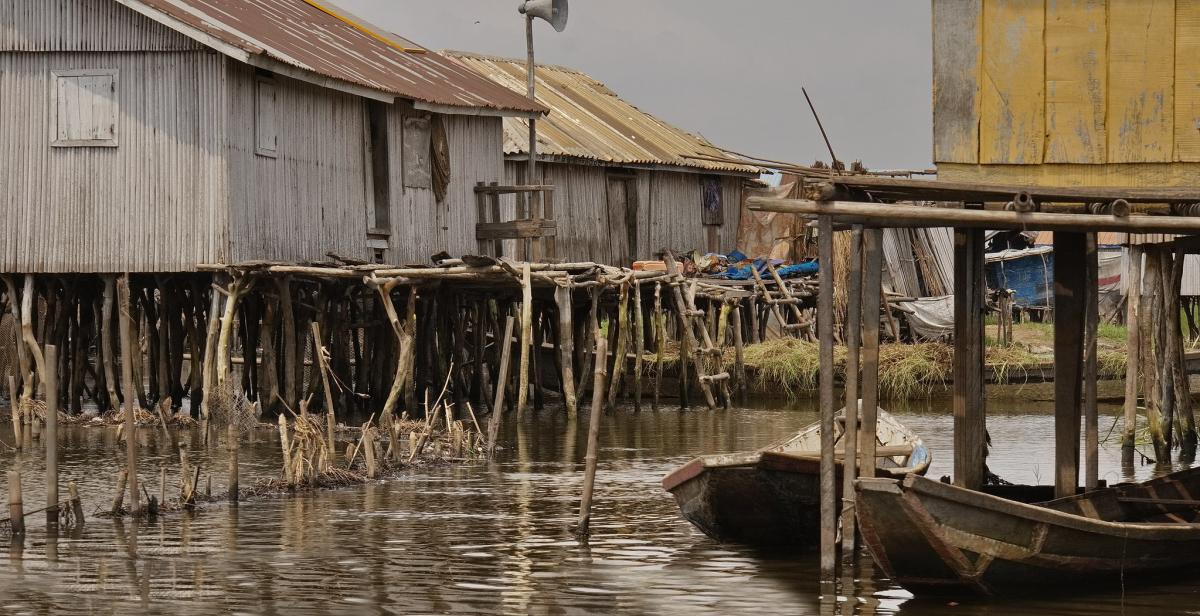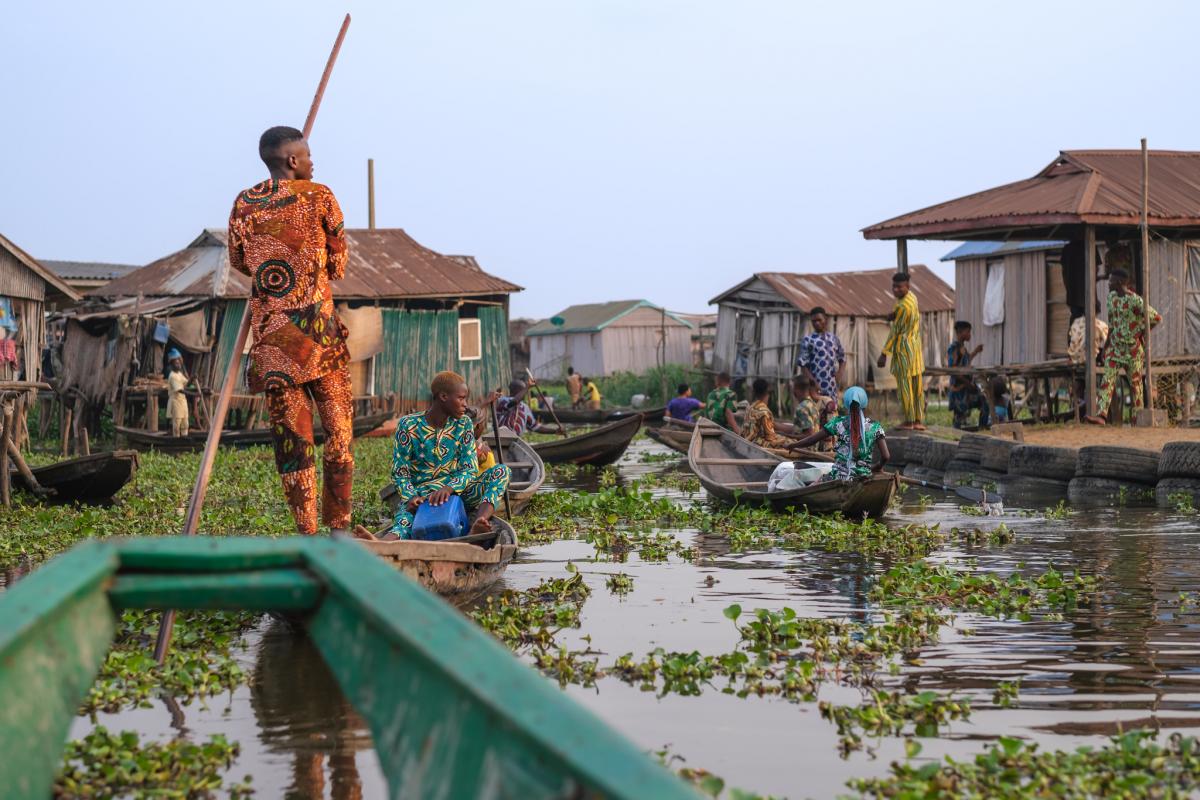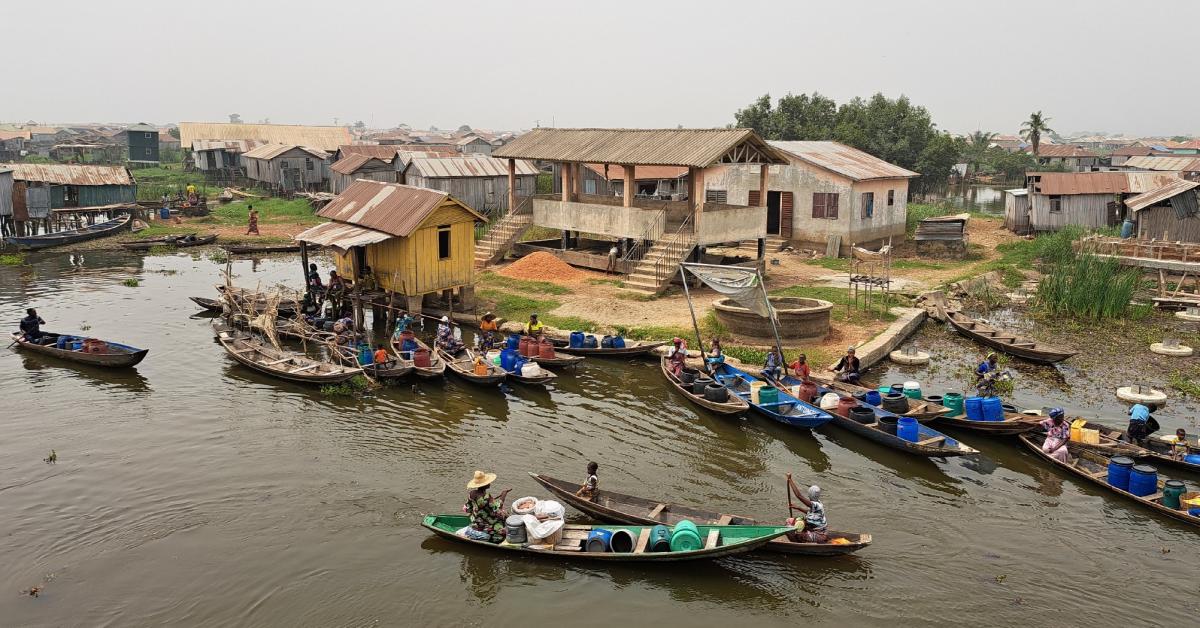TY5AD Team is currently active from near Kotoneu, Benin.
Team - RUDXT.
Recent DX Spots TY5AD
TY5AD Log search They will operate on 80 - 10m, using 100w and vertical ants.
QSL via LOTW, ClubLog OQRS.
Mysterious Benin - the birthplace of Voodoo
Most people who know about Benin associate it with its unique and distinctive culture. And it's no coincidence - this country is the birthplace of Voodoo, the most famous of all African beliefs. Due to its diverse ethnic makeup, Benin boasts a cocktail of religions, customs, and practices. The country's population consists mainly of indigenous tribes and ethnic groups who practice pagan cults. But Benin is no less interesting for its pristine nature, architecture, and large number of preserved artifacts from different eras.
 Benin. Author - Mauro Astolfi.
Benin. Author - Mauro Astolfi.
African Europe
The state of Benin is located in western Africa, on the coast of the Gulf of Guinea. The country is not large, but it boasts a great architectural and landscape diversity. Here you can find picturesque national villages, places with beach infrastructure, and even developed cities reminiscent of European ones. The country actively adheres to a Western course. The locals speak French and have adopted many of the laws of that country.
Despite the fact that the economic situation here still leaves much to be desired, by African standards, Benin is a developing and progressive country. The very name “Benin” is translated from one of the local languages as “country of wars.” At the moment, this definition is not very relevant, but there have been other times.
Throughout its history, this land has seen a lot: territorial conflicts, frequent changes of power, slave trade, civil strife... As a result of these contradictions, the administrative division of the country was unclear for a long time. It was only at the end of the 20th century that the president of Benin took a clear course towards the establishment of a stable state and a sustainable economy.
The official capital is the small and cozy town of Porto-Novo, but in fact, the government is based in Cotonou, a larger and more developed center. This is where the main financial operations take place and foreign embassies are located. At the same time, the capital is more colorful in terms of national culture, with many historical attractions concentrated here.
 Benin. Author - Geigerwe.
Benin. Author - Geigerwe.
Natural features
The main relief of Benin is flat, although lowlands prevail in the south and the northwest is bordered by a mountain range. The southern part is a flat coastline indented with bays. The northern mountains serve as a watershed for rivers flowing into the gulf. The river valleys are very fertile and allow for full-scale agriculture. However, from October to April, there is a dry season, which is fraught with global droughts — sometimes even causing rivers to dry up.
The climate of Benin gradually transitions from subequatorial to equatorial. The closer to the south, the longer the rainy season and the greater the opportunities for harvest. The local population mainly grows cotton and corn. However, the mountain plateaus are also quite densely populated, as the land here is suitable for agriculture. This area is a source of oil palm, one of Benin's most important crops.
Contrary to stereotypes, Benin is not poor in mineral resources. There are large deposits of limestone, oil, marble, iron ore, and natural gas. However, all these treasures remain untouched—the people do not engage in such development. The country's economy is based on agriculture, the export of a few crops, and tourism, which has been actively developing in recent years. The unusual culture, sea, and diverse nature attract visitors: Benin can give you an idea of what Africa is like. The beaches along the coast are well maintained and equipped with tourist infrastructure.
Historical path
The ancient state known as Benin, oddly enough, has no connection to this land—it was located in what is now Nigeria. However, on the coast of the Gulf of Guinea, there was a country called Dahomey. When Europeans and Catholic missionaries arrived in the 17th century, the local population did not offer much resistance. In the 18th century, relations between Europe and Dahomey reached their peak, with the latter becoming one of the most powerful African states. Unfortunately, this was not due to rich natural resources. The main export from Dahomey was slaves, whom the king sold to European merchants in huge numbers.
He was supported in this by local Amazons – women of incredible strength and physical fitness. Attacking towns and villages, they took prisoners and sold them into slavery. In this field, the king managed to earn a fabulous sum for those times, bringing fame to Dahomey. But already at the beginning of the 19th century, the empire began to gradually weaken.
At first, the country refused to sell slaves, which provoked hostility from France. After several occupations and attacks on Porto-Novo and Cotonou, and then the whole of Benin, it became a French colony. With the gradual abolition of slavery, the country lost its former status and sovereignty. It was annexed to French West Africa and completely subordinated to the plans of its colonizer. During World War I, the French established a military base here. Periodically, uprisings broke out here, dissatisfied with the established regime, but the Europeans brutally suppressed them. Eventually, the country managed to gain administrative independence and become an overseas territory of France. Benin was allowed to have self-government, but on the condition that French would become the main language of the population.
 Benin. Author - Basz15.
Benin. Author - Basz15.
Life in the modern republic
Today, the country's population is just over 8 million. This relatively small number is represented by sixty ethnic groups. In addition to French, a huge number of local dialects are spoken here. It can be said that every resident of Benin is a polyglot, as they have to interact with speakers of different languages on a daily basis. The country's coat of arms is colorful and includes several elements. It reflects the main symbols of Benin: an oil palm, a star-shaped award, a castle, and a ship on which Europeans once arrived here. The country's motto echoes the famous slogan of France – only here the three principles are translated as “Brotherhood, Justice, Work.”
Christianity and Islam are practiced by 30% of the population – the rest prefer various pagan beliefs. At the same time, the number of churches and mosques in cities is increasing every year. The way of life is as diverse as the ethnic composition: Benin is home to artisans, fishermen, farmers... Many villagers still practice Voodoo and other pagan beliefs. Visitors have the opportunity to admire ritual dances and bizarre ceremonies.
The Tamberma people, who practice Voodoo, and the temple of this cult are currently under UNESCO protection. At the same time, it cannot be said that the locals are far from modern culture. Benin is home to talented painters whose works have been exhibited in European exhibitions.
The country's national football team is considered one of the strongest in Africa, which speaks to the high level of athletic training.
Amazing corners of Benin
The architectural attractions include, first and foremost, the palace complex in Abomey. According to tradition, each new ruler of Dahomey built his own palace while preserving the old one. As a result, the city now has a complex of twelve palaces. Another amazing place is the settlement of Ganvie, often referred to as the local Venice. Due to local beliefs that prohibit people from touching water, the houses here are built on stilts in the middle of a lake. This applies not only to houses but also to all kinds of establishments, including shops, cafes, and even hotels.
There are several voodoo temples in the country, and Cotonou is famous for one of the largest markets for magical goods. However, you can buy not only ritual masks and amulets here but also ordinary household items and souvenirs. Another outstanding market is located in the town of Bokoumbe. The Pendjari National Park allows you to get in touch with African wildlife – extreme safaris are practiced here. Elephants, cheetahs, lions, and hippos inhabit the territory. There is an ethnographic museum in the capital.

